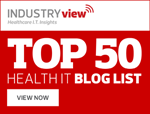Healthcare Unbound - Keynotes, Part 2
Erik Olsen, current president of AARP, presented perspectives on health care as seen by the stakeholders that he represents. AARP's goal is to create a reformed, patient focused, universal coverage based health care system that controls cost. They want to see a phased approach to transforming health care in the U.S. He recounted the history of doomsday predictions surrounding the baby boomer generation - that there was no way we could build enough schools or train enough teachers to educate the boomers - to discount today's hand wringing about how heath care for boomers is going to bankrupt the nation. Given the track record for centralized bureaucratic central planning (the great Communist economies, the European welfare state, even the creation of the department of Homeland Security), I can't understand why a single payer solution is the best way to reform health care. Haven't the bureaucrats created the health care mess we have now?
The next speaker, Michael Barrett, of Critical Mass Consulting, was the author of the original Healthcare Unbound report published in 2002. He talked about the Paradox of Self-Management. Why can't patients better take care of themselves? The issue of patient self-management has been around for many years. Mike's hypothesis is that to compensate for the irrationality of individual decision making, patient self-management tools should take note of prospect theory. From Wikpedia:
The theory is basically divided into two stages, editing and
evaluation. In the first, the different choices are ordered following
some heuristic
so as to let the evaluation phase be more simple. The evaluations
around losses and gains are developed starting from a reference point.
The value function which passes through this point is s-shaped and, as
its asymmetry implies, given the same variation in absolute value,
there is a bigger impact of losses than of gains (loss aversion). Some behaviors observed in economics, like the disposition effect or the reversing of risk aversion/risk seeking in case of gains or losses (termed the reflection effect), can be explained referring to the prospect theory.
An important implication of prospect theory is that the way economic agents subjectively frame
an outcome or transaction in their mind affects the utility they expect
or receive. This aspect of prospect theory, in particular, has been
widely used in behavioural economics and mental accounting.
Framing and prospect theory has been applied to a diverse range of
situations which appear inconsistent with standard economic
rationality; the equity premium puzzle, the status quo bias, various gambling and betting puzzles, intertemporal consumption and the endowment effect.
The bottom line: for any HU patient self-management solutions to actually work, a significant amount of psychology must be applied to the introduction, training and ongoing use and patient interaction of self-management solutions. This is an important requirement for those who want to develop, bring to market, and use patient self-management systems.
Jeremy Nobel MD, of Harvard, spoke about getting payors and purchasers to support (i.e., reimburse) for HU products and services. After a summary of health care trends (the usual increases in costs and chronic disease), he dove into health care purchasers (employers) perspectives. Employers are positive on high deductible health plans (HDHP) and disease management as ways to better manage costs. The attitude about HDHPs is not the short term cost shifting, but the potential impact that a direct relationship between what a patient pays and their resulting behavior may have on better decisions. Interestingly, the same research showed that employer interest in higher employee cost sharing was significantly lower than HDHPs.
Here are the conditions driving HU adoption among payors and self-insured employers: technology evolution (cheaper, faster, better, smaller, ubiquitous), benefit designs (HSA/HDHPs, consumer-directed movement), and evolution of pay for performance (paying for improved outcomes rather than improved processes). He talked about the market opportunity to work on the margins in the transition from a healthy patient to health situation to physician visit to hospital admission. Current HU technology was reviewed. His wish list for IT solutions included a web-based personal health records, home-based biometric devices (integrated with the online personal health record), and collaborative connectivity - i.e., interaction with caregivers. He emphasized on the need for whole product solutions that address lab results, vital signs, pharmacy, self reported behavior and health status, and a place for providers (your primary care physician (PCP), care coach and a way for specialists to also interact with the patient).
Pictured right is the graph representing how a subject's behavior changes over time based on wins or losses. Basically, there's a bigger impact on subsequent decision making from losses than from gains. In health care this means that positive outcomes from behavior modification (smoking cessation, weight loss, lowering blood pressure) have a diminishing emotional impact.



